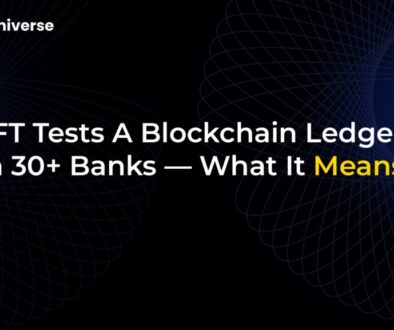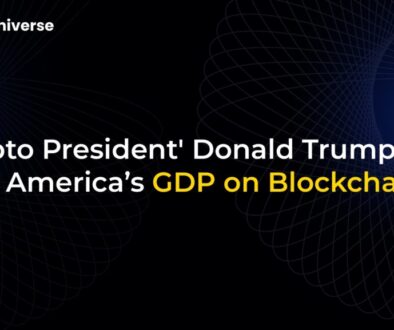PayPal Backs Stable L1 to Expand PYUSD Stablecoin Utility Across Blockchains

PayPal Makes a Strategic Move into Dedicated Stablecoin Infrastructure
In a significant development for the stablecoin landscape, PayPal Ventures, the venture capital arm of the global payments giant, has made a strategic investment in Stable, a unique Layer 1 blockchain built specifically for stablecoin transactions. This move is part of a broader initiative to dramatically expand the distribution and utility of PayPal’s own stablecoin, PayPal USD (PYUSD), which has already grown to a market capitalization of over $1.3 billion.
The collaboration not only brings new funding to Stable but also integrates PYUSD directly onto its network, known as the Stablechain. This integration aims to unlock new use cases for PYUSD, particularly in commerce and cross-border payments, by leveraging a blockchain designed from the ground up to eliminate common friction points in crypto transactions.
What is Stable, and Why is PayPal Interested?
Stable isn’t just another general-purpose blockchain. Its core mission is to create a seamless financial ecosystem powered by stablecoins. What makes it particularly compelling is its unique architecture:
- Stablecoin-First Design: The network is optimized for fast, low-cost stablecoin transfers, making it ideal for payments, remittances, and commerce.
- USDT for Gas Fees: In a major user experience improvement, Stable uses Tether (USDT) as its native gas token. This means users don’t need to hold a separate, volatile cryptocurrency just to pay for transaction fees. They can conduct all operations using a familiar stablecoin.
- Focus on Real-World Adoption: As noted by Amman Bhasin, a Partner at PayPal Ventures, Stable is targeting emerging markets where “reliable, dollar-based payments can have the greatest impact.”
“This work with Stable reflects our commitment to expanding PYUSD’s utility across multiple blockchain ecosystems and driving adoption,” said David Weber, Head of PYUSD Ecosystem at PayPal. “Stable’s focus on fast, seamless financial transactions using stablecoins removes traditional friction points for users.”
Supercharging PYUSD with Cross-Chain Technology
The integration of PYUSD onto the Stablechain is powered by LayerZero, a leading interoperability protocol. This technology acts as a bridge, allowing PYUSD to move programmatically between different blockchains.
This is a crucial piece of PayPal’s strategy. By investing in and integrating with networks like Stable, PayPal is ensuring its
The Bigger Picture: A Race for the Stablecoin Highway
PayPal’s investment in Stable is not an isolated event. It’s a clear signal of a burgeoning trend among major financial and tech players: building or backing dedicated blockchain infrastructure for stablecoins. The industry’s giants are no longer content with simply issuing tokens on other companies’ networks; they are now racing to control the underlying “highways” on which these digital dollars will travel.
Consider the competitive landscape:
- Circle (USDC): The issuer of the second-largest stablecoin is developing its own “Arc” blockchain.
- Ripple (XRP): The company behind the XRP Ledger is launching its own stablecoin, RLUSD, on its native network.
- Stripe: The payments processor owns a stablecoin infrastructure firm and is reportedly developing its own “Tempo” blockchain.
By investing in Stable, PayPal is securing its place in this high-stakes race, gaining influence over a blockchain tailor-made for the very use cases it wants to dominate.
From Tether’s Orbit to a Multi-Stablecoin Platform
An interesting subplot to this story is Stable’s origins. The project initially received investment from Bitfinex, an affiliate of Tether, and its use of USDT for gas led many to view it as the unofficial “Tether blockchain.”
However, the investment from PayPal Ventures and the integration of PYUSD fundamentally repositions Stable. It is now evolving into a more neutral, multi-asset platform that supports competing stablecoins. This move not only validates Stable’s technology but also broadens its appeal, signaling a commitment to serving the entire stablecoin ecosystem, not just a single issuer.
The Road Ahead for PayPal and Stablecoins
The partnership between PayPal and Stable is a powerful statement of intent. For PayPal, it’s a strategic step to embed PYUSD deep within the fabric of the crypto economy, making it more useful and accessible. For Stable, it’s a monumental vote of confidence from one of the world’s most recognized financial technology companies.
As the digital asset space matures, the battle for dominance will increasingly be fought on the infrastructure layer. This collaboration shows that PayPal understands this reality and is actively positioning itself not just as a participant, but as a foundational architect of the future of finance.


